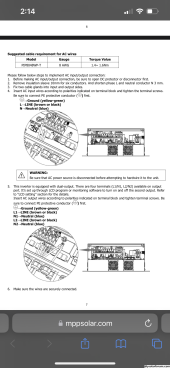I'm so clueless on this. Completely clueless.
If it's a 240v appliance (only needing 3 wires including ground, so it only uses 240v) and has a ground wire hook up in it, can't it just use the same ground as the rest of the building regardless of what that buildings electrical system is? Do you need separate system ground points for different AC voltages/phases?
You can't just run the ground *only* from the 240v single phase 60hz inverter to your main panels ground (or the rod itself), and run 3 cables from the inverters output to the appliance being powered only by the 240v inverter? I understand you wouldn't want to mix the 240v single phase inverter output into the rest of your normal split phase system, I assumed that only applied to the regular hot/neutral wires and not to ground.
What is this autotransformer you are talking about transforming and how would it be hooked up? Is it because of the neutral/ground bond in the main panel? Are we trying to eliminate 240v single phase inverter output traveling back into the main split phase system on the neutral / ground bonding?




